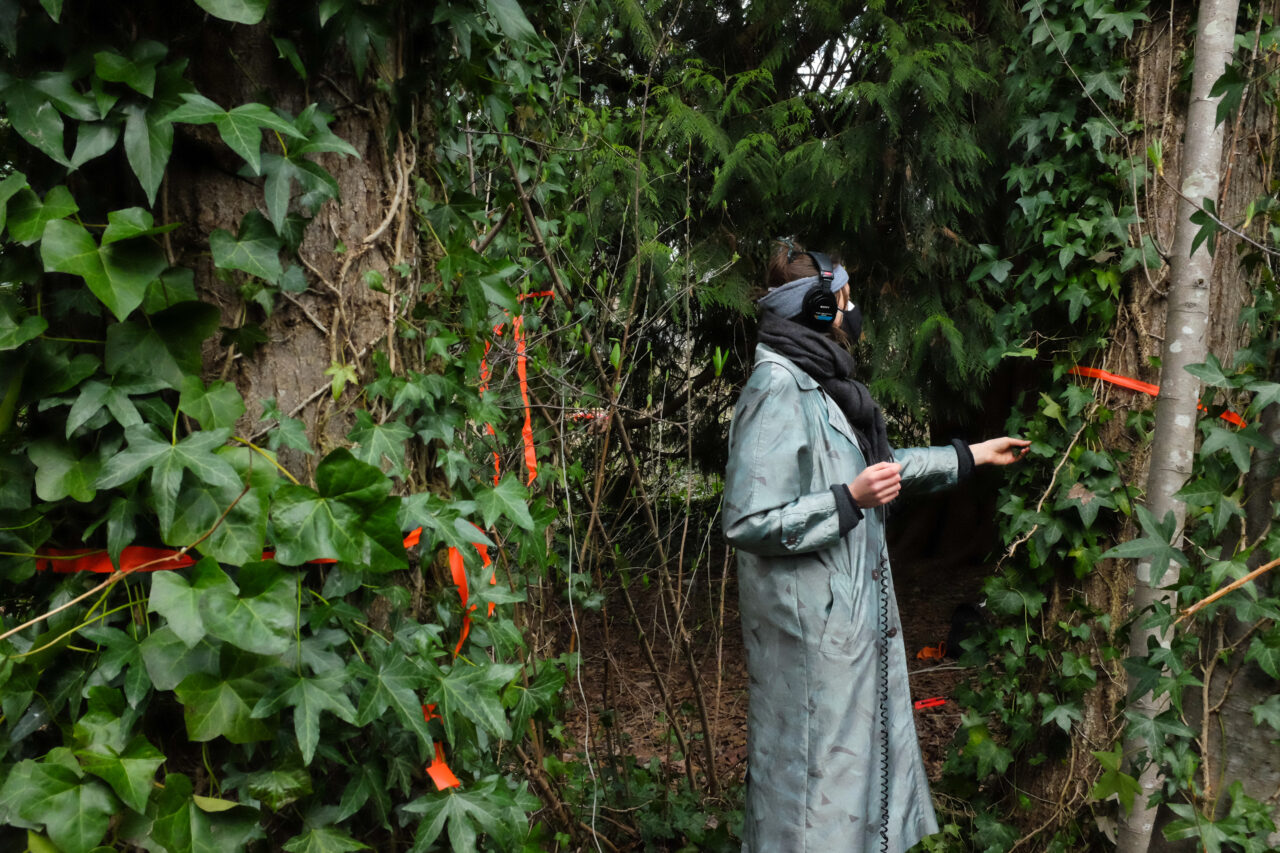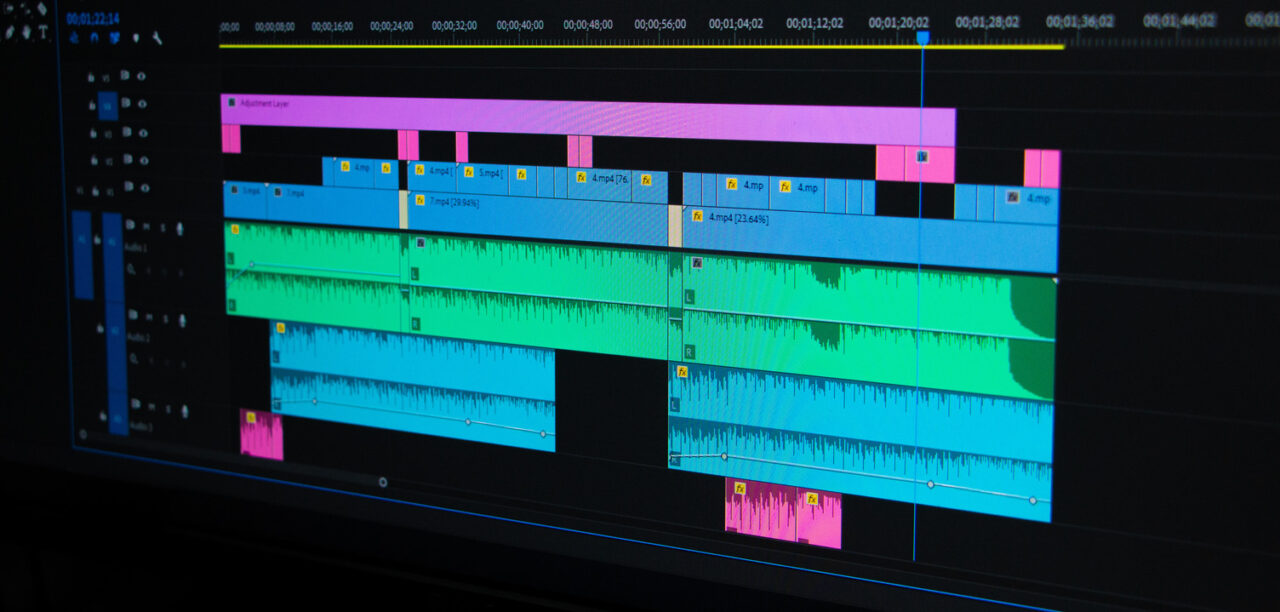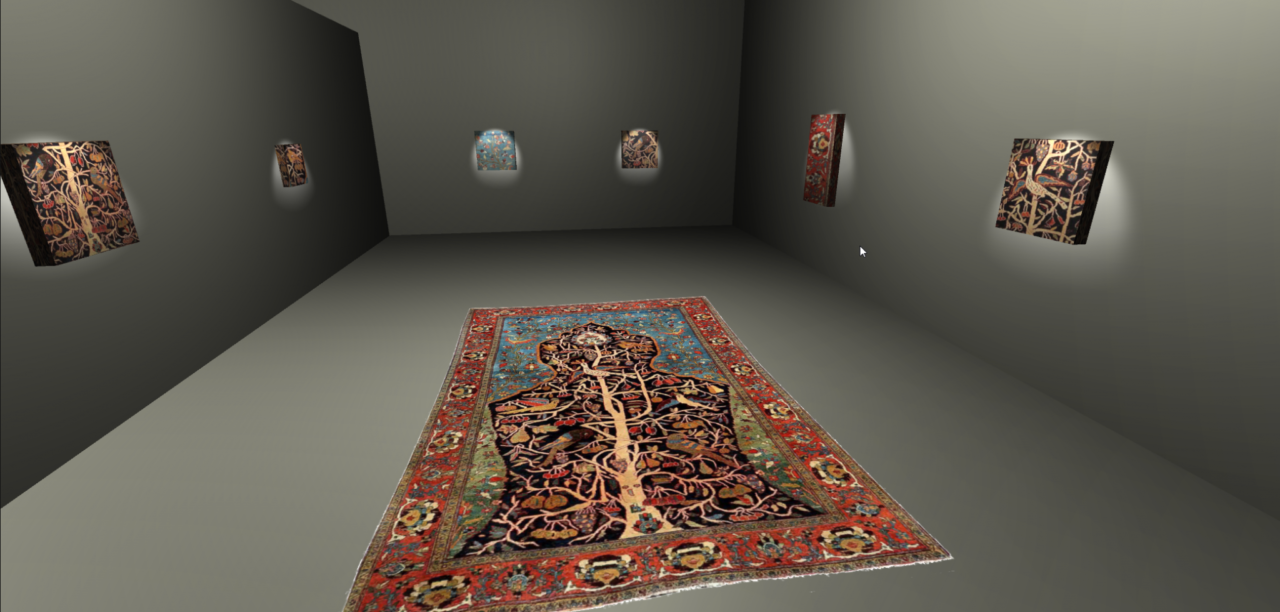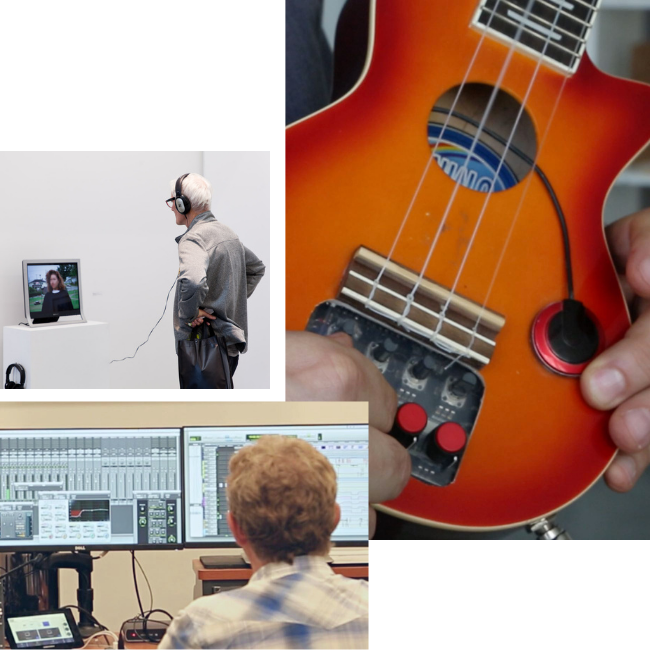New Media + Sound Art
When new technologies meet compelling storytelling, the possibilities are endless.
Through media and sound, learn creative ways to tell stories and offer unique perspectives. The New Media + Sound Art (NMSA) major is multidisciplinary and flexible, and allows students to create a range of media projects using sound, video, interactive art, digital fabrication, and electronics.
What You Will Learn
The New Media + Sound Art Major explores the intersections of technology and storytelling. You'll gain both conceptual and practical skills for producing creative, innovative, and experimental research and projects. This may include working with electronic wearables, sonic objects and environments, creative computing, and performing with media.
You'll also be encouraged to take electives in other programs, combining interests in media with ceramics, textiles, animation, and sculpture. Throughout your studies, your courses will be taught by award-winning, established artists who are experts in their fields.
Later in your studies, you'll participate in self-directed projects and research themes including audiovisual experiences, sound ecologies, and making data. In the final year of your studies, you'll work on a larger self-directed piece, research project, or experimental processes.
You'll have the freedom to create albums, installations, interactive artwork, textiles, performance pieces, or other products based on your specific interests and talents. Most importantly, you'll graduate with an impressive portfolio of work that will help launch your career or future studies.
New Media + Sound Art encourages open-ended inquiry. Throughout your studies, you'll examine how art and technology can contribute toward positive social change, enhance our perceptions, and offer new ways of relating to and protecting the world around us.

ECU student Keira Madsen listens to touch interactions with old alder trees at Stoney Creek — one of the sites being cleared for the Transmountain Pipeline expansion.
“Our objective here is to draw more attention to these trees, and to provide new tools and new ways of thinking for people to understand their locale. We want to provide art experiences to help people develop meaningful relationships with the non-human world and the natural systems around them.”
Program Structure
Credits: 120
Year 1: First-Year Foundation Studies
Year 2-4: New Media + Sound Art courses and electives
Designation: Bachelor of Media Arts, Majoring in New Media + Sound Art (BMA, New Media + Sound Art)
Faculty: The Audain Faculty of Art
For application information, including admission requirements, see Admissions.
Example Courses
- NMSA 206: Creative Electronics
- NMSA 213: Media Installation + Relic Tech
- NMSA 313: Public Performance Art + Installation
- NMSA 315: Decolonial New Media
- NMSA 326: Interactive Wearables
- NMSA 405: Advanced Techniques + Materials
Students also have the opportunity to complete a Minor in Curatorial Studies, Art + Text, Social Practice + Community Engagement or Ecological Practices in Art.
Shops + Studios

Studio culture is at the heart of your educational experience at Emily Carr, as spaces where you can create, learn, collaborate, experiment, and play.
NMSA students have access to our spacious and well-equipped shops and studios, including our NMSA Lab and Sound Lab. You may also explore the resources in our Wearables + Interactive Products Lab, Interaction Design Lab, Digital Fabrication Lab and the Basically Good Media Lab.
Each space is maintained by expert technical staff who collaborate with faculty and staff to provide students with instruction and guidance. Technical staff ensure safe and accessible working environments and lead instructional workshops to enhance your learning.
Beyond the Classroom

“The project enlightened me about the ethics of an artist to raise public awareness on what matters in the world. I collaborated on five other research projects [at ECU] as well. All these projects made this emerging artist today who tries to raise awareness about local and global issues through her art, using media and sound.”



